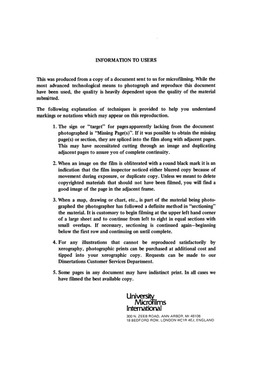| dc.contributor.author | Strand, James Harold, | en_US |
| dc.date.accessioned | 2013-08-16T12:28:18Z | |
| dc.date.available | 2013-08-16T12:28:18Z | |
| dc.date.issued | 1980 | en_US |
| dc.identifier.uri | https://hdl.handle.net/11244/4829 | |
| dc.description.abstract | Chapter Three contains a presentation of twenty organ compositions which were selected for inclusion in the study. The first part of each presentation covers information concerning the difficulty level, performance time, and the registrational requirements. The second portion is a commentary on the compositional basis and important formative aspects of the structure of each work. In addition, formal diagrams and descriptions are given, providing an accessible overview of the formal procedures utilized in each composition. This portion of each presentation serves as an introduction to basic aspects of the music and as a point of departure for analysis in greater depth. The first page of each work is reproduced as well as one additional page, which the writer considered to be representative of the difficulty level. | en_US |
| dc.description.abstract | Chapter One provides background information about musical life in Holland during the past centuries, concentrating particularly on the organ and its music. Included also is the need for the study, the purpose of the study and the procedures followed in selecting and reviewing the various works. | en_US |
| dc.description.abstract | Chapter Two is a brief overview of organ composition after World War II by composers from various countries. There is special emphasis on the stylistic trends that have appeared in organ music written since 1960. The chapter provides a point of reference for the organ compositions by Dutch composers which are presented in Chapter Three. | en_US |
| dc.description.abstract | Chapter Four contains a summary and conclusions. A wide variety of compositional approaches were found in the selected compositions, varying from tonally oriented pieces based on Psalm tunes, to freely constructed compositions that are extremely complex in all aspects. In addition to the use of neo-baroque and neo-romantic styles, serialism, electronic technique, and aleatoric technique are all represented in Dutch organ compositions. The works, as a whole, offer a considerable amount of divergence, blending traditional influences and contemporary techniques. The composers have not lost sight of the need to compose pieces which are playable, thus illustrating a high level of idiomatic integrity. | en_US |
| dc.description.abstract | Contemporary Dutch organ music is performed infrequently outside of Holland. This study has been made to bring attention to recent organ compositions by Dutch composers. | en_US |
| dc.format.extent | vii, 172 leaves : | en_US |
| dc.subject | Music. | en_US |
| dc.title | Netherlands organ music from 1960 through 1977 : | en_US |
| dc.type | Thesis | en_US |
| dc.thesis.degree | D.M.A. | en_US |
| dc.thesis.degreeDiscipline | School of Music | en_US |
| dc.note | Source: Dissertation Abstracts International, Volume: 41-10, Section: A, page: 4209. | en_US |
| ou.identifier | (UMI)AAI8107967 | en_US |
| ou.group | Weitzenhoffer Family College of Fine Arts::School of Music | |
